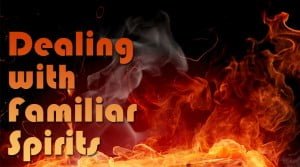

The debate between these and other scholars will be very instructive.” -Jacqueline Simpson, Folklore Emma Wilby’s views challenge those of other current historians, notably Owen Davies, who sees cunning folk as far more pragmatic and down-to-earth, and Diane Purkiss, who interprets the encounters of witches with fairies as compensatory psychological fantasies.

are evidence of archaic animistic beliefs persisting into early modern times occasionally, they hint at experiences of religious intensity comparable not merely with shamanism, but with the visions of medieval Christian mystics. “Emma Wilby examines in abundant detail the statements in which witches and cunning folk described their encounters with spirits. The book is carefully organized and clearly written.” -Moira Smith, Journal of Folklore Research Wilby points out, correctly, that we do not think of cunning folk as mystics because they do not conform to the pious and ascetic norms established by Christian saints. She goes further, arguing that the concept of the witch’s familiar derives from ancient British animistic religion. “Wilby’s thesis is that the image of the familiar spirit is not an elite fiction imposed by prosecutors, but represents the folk beliefs of magical practitioners-cunning folk who practiced beneficent magic, and witches who were more malevolent. These perspectives challenge the reductionist view of popular magic in early modern British often presented by historians.

The author explores the experiential dimension of familiar lore by drawing parallels between early modern familiar encounters and visionary mysticism as it appears in both tribal shamanism and medieval European contemplative traditions. It argues that beliefs about witches' familiars were rooted in beliefs surrounding the use of fairy familiars by beneficent magical practitioners or 'cunning folk', and corroborates this through a comparative analysis of familiar beliefs found in traditional native American and Siberian shamanism. Cunning-Folk and Familiar Spirits examines the folkloric roots of familiar lore from historical, anthropological and comparative religious perspectives. Although this paradigm is now routinely questioned, and most historians acknowledge that there was a folkloric component to familiar lore in the period, these beliefs and the experiences reportedly associated with them, remain substantially unexamined. Until recently historians often dismissed these descriptions as elaborate fictions created by judicial interrogators eager to find evidence of stereotypical pacts with the Devil.

In the hundreds of confessions relating to witchcraft and sorcery trials from early modern Britain we frequently find detailed descriptions of intimate working relationships between popular magical practitioners and familiar spirits of either human or animal form.


 0 kommentar(er)
0 kommentar(er)
